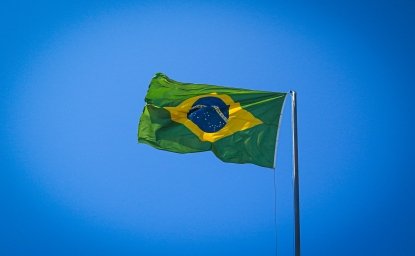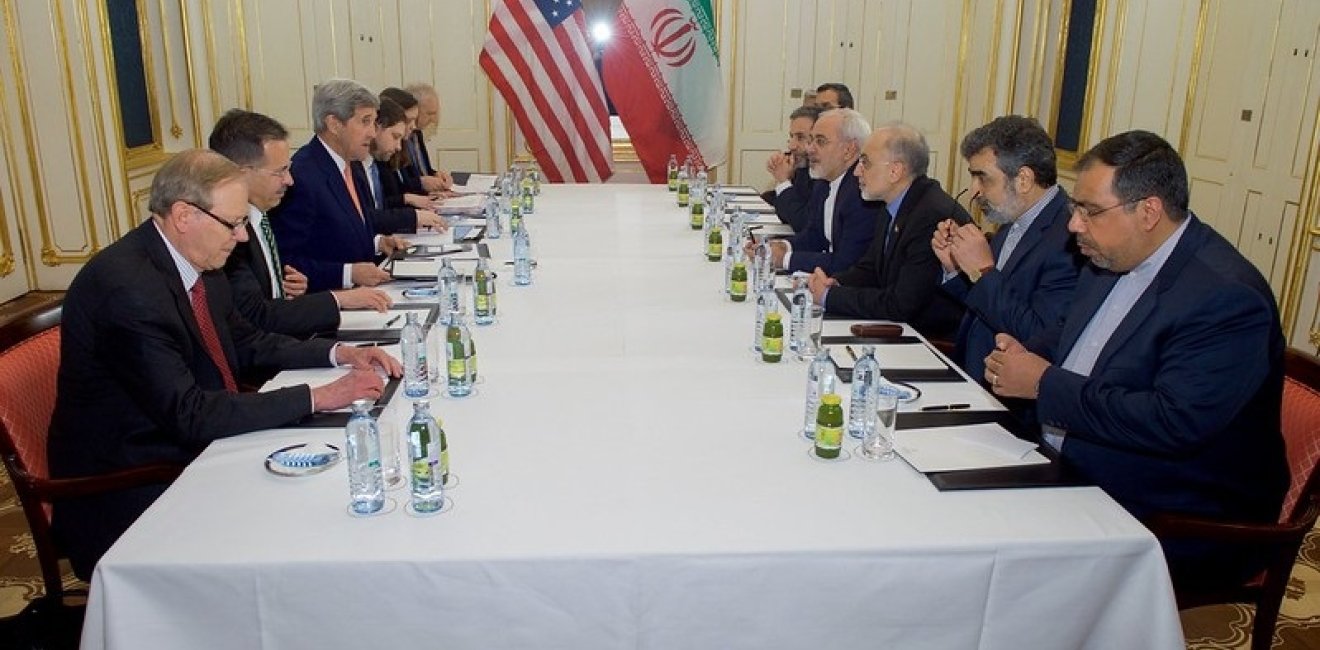The sequence of events triggered by the U.S. drone strike killing General Qassim Suleimani in Baghdad on January 3 has brought the United States “closer to war with Iran than we’ve been in the last 40 years,” according to former Secretary of Defense Leon Panetta. The Tehran regime retaliated with a salvo of missile strikes on two U.S. bases in Iraq. This military response followed Iran’s declaration that the country would no longer observe the negotiated constraints on its nuclear program under the 2015 deal. Though these major developments heighten the risk of an escalatory spiral, they do not alter the fundamental structure of the crisis in which post-revolutionary Iran and the United States have been locked over the last four decades.
During this forty years’ crisis, the respective policy debates in Iran and America have revealed persisting contradictions. In Tehran, the politics of foreign policy are roiled by the regime’s unresolved identity crisis: in Henry Kissinger’s words, is Iran “a nation or a cause”—an ordinary country or a revolutionary state? The nuclear issue, the centerpiece of international diplomacy with Iran, has been a proxy for that more fundamental issue of how the Tehran regime defines the Islamic Republic’s relationship with the outside world in general and America—the “Great Satan”—in particular.
In Washington, competing strategies—whether to contain, engage or strike— center on an unresolved tension: should the objective of U.S. policy toward Iran be to change the Islamic Republic’s behavior or to change its ruling theocratic regime? Contending assumptions about the nature of the threat and the prospects for a change of or within the Tehran regime undergird alternative policy options. In the transformed security environment after the 9/11 terrorist attacks, the George W. Bush administration argued that threatening behavior posed by “rogue states,” including Iran, derived from the very character of their regimes—a proposition central to its case for a preventive war of regime change in Iraq in 2003. But unable to replicate in Iran the Iraq precedent of coercive nonproliferation through regime change, the Bush administration was caught in a dilemma, never resolving its own mixed message—whether the U.S. objective was regime change or behavior change.
The Obama administration dropped the Bush-era “rogue” moniker in favor of “outlier” to frame the Iranian nuclear challenge in terms of Iran’s non-compliance with international norms rather than as a unilateral American political concept. The Tehran regime was given a structured choice: come into compliance with Iran’s obligations under the Nuclear Non-Proliferation Treaty or face punitive measures and deeper isolation. This recasting of the Iranian nuclear challenge helped forge broad multinational support for the tough financial and oil sanctions that brought Iran to the negotiating table under reformist President Hassan Rouhani. But Rouhani’s narrow foreign policy writ from the Supreme Leader did not extend to Iran’s regional policies. On these issues beyond the nuclear portfolio, Khamenei gave the institutional lead to the Quds Force, the Revolutionary Guard’s extraterritorial special forces under Suleimani’s command.
The Joint Comprehensive Plan of Action (JCPOA), concluded between Iran and the world’s major powers in July 2015 and endorsed by the UN Security Council, constrained Iran’s nuclear aspirations by blocking its access to weapons-usable fissile materials. The goal was to keep Iran’s latent capability latent. The JCPOA was quintessentially transactional—a deal focused exclusively on Iran’s nuclear challenge, not a grand bargain encompassing other objectionable aspects of Iranian behavior, such as the Tehran regime’s destabilizing regional policies and human rights abuses. The Obama administration had made the pragmatic determination that expanding the scope of negotiations beyond the urgent nuclear challenge would have scuttled the chance for success.
But tension between the competing objectives of regime change and behavior change continued to complicate the U.S. policy debate on Iran. For Congressional and other critics of the JCPOA calling for a “better deal,” the crux was that the transactional JCPOA was not transformational—that it constrained but did not eliminate Iran’s nuclear infrastructure and failed to address Iran’s malign behavior, especially its assertive regional role, outside the four corners of the deal.
Though the nuclear accord was transactional, it was embedded in the broader issue of Iran’s societal evolution. Obama defended the JCPOA in transactional terms (that it addressed a discrete urgent challenge), but posited that the deal’s tangible benefits would empower Iran’s moderate faction, putting the country on a more favorable societal trajectory and orienting Iran’s economy toward the West. So underlying the transactional deal was an implicit transformational bet.
The Trump administration revived the designation of Iran as a “rogue” state—again linking the threat posed by Iran to the character of its regime—and withdrew from the Iran nuclear agreement, which the president called “the worst deal ever.” When withdrawing from the JCPOA in May 2018, the Trump administration embraced an agenda for immediate transformational change. Secretary of State Mike Pompeo laid out “12 very basic requirements” for “a new deal” with Iran that ranged from the dismantling of its uranium enrichment program and a cessation of missile tests to the withdrawal of Revolutionary Guards from Syria and the ending of the regime’s longstanding support for Hezbollah. Acquiescing to the U.S. demand that Iran become a “normal” state would entail changes in foreign and domestic policies that Tehran views as central to its identity and the sources of its legitimacy. Though the administration denied that its objective was regime change, meeting Pompeo’s parameters would essentially require a change of regime in Tehran.
Under the rubric of “maximum pressure,” the Trump administration has waged economic war on Iran—reimposing U.S. sanctions lifted under the JCPOA, attempting to block all Iranian oil exports, and pressing other states (including through the threat of extraterritorial secondary sanctions on foreign commercial entities) from conducting business with Iran. Under U.S. sanctions, Iran’s oil exports fell from some 2.5 million barrels of oil per day to just 100,000 barrels, according to oil industry sources. Moreover, foreign companies that had laid plans for projects and investments in Iran after the signing of the JCPOA were given the stark choice of being able to conduct business either in the United States or Iran. The consequence has been the withdrawal of major European corporations, such as Siemens, from the Iranian market.
The Trump administration’s “maximum pressure” campaign to deny the Tehran regime any oil revenues, coupled with its appeals to the Iranian people to voice their objections to the regime’s “malign activities,” points to regime change as the tacit objective of U.S. policy. Administration policy is evidently premised on the assumption that maximum pressure will either coerce the Tehran regime into accepting its comprehensive set of demands or will force the collapse of the regime. That assessment, even after the wave of anti-regime demonstrations in November 2019, is more a vain hope than a realistic prospect. The regime would have no compunction in unleashing its intelligence services and the paramilitary Basij to brutally suppress any internal challenge to its survival. Externally, Iran responded asymmetrically to the U.S. embargo via a precision drone and cruise-missile strike on Saudi Arabia’s oil infrastructure in mid-September. The dramatic attack signaled the regime’s willingness to disrupt the global economy if its ability to sell oil was blocked.
The acute crisis precipitated by the killing of Suleimani invites speculation about an alternative future—how events might have plausibly evolved had the Trump administration not precipitously withdrawn the United States from the JCPOA. Prior to the withdrawal, Western companies, including American firms, were poised to reenter the Iranian market, and the financial sanctions that prevented Iran from conducting global commerce had been lifted. This renewed economic confidence was reflected in Iran's GDP, which grew by 13.4% in 2016 (the year after the JCPOA). Significantly, Iran’s regional overreach, spearheaded by the Quds Force, gave rise to domestic political criticism, with demonstrators condemning the financial costs of the regime’s foreign policy activism. Against this backdrop and a functioning nuclear agreement, follow-on diplomacy, which the U.S. and EU negotiators of the JCPOA had always anticipated, might have addressed other issues of concern, such as Yemen, Iraq, and Syria.
The Trump administration’s strategy of “maximum pressure” has had unintended consequences. Iran is orienting its trade east instead of west through barter arrangements with Russia, China, and India. In the military realm, Russia and China, seeking to frustrate U.S. efforts to isolate Iran, conducted exercises with Iranian naval vessels in the Gulf of Oman. It is now the United States that is diplomatically isolated in a crisis that the European Union, Russia, and China view as having been set in motion by the Trump administration’s decision to withdraw from the JCPOA.
While the risks are evident, an escalatory spiral, even after Iran’s retaliatory missile strikes, is not inevitable. Though hardliners are ascendant in both Washington and Tehran, and there has been a complete breakdown in trust, neither side wants war. In Iran, autarky through a “resistance economy” allows Iran to barely muddle through, but is not a viable long-term strategy in the face of the country’s demographic and other critical societal challenges. If the cycle of retaliation ends with the Iranian missile strike, this conjunction of factors could create political space for revived diplomacy of the kind mooted by French President Macron at the United Nations last September. An urgent priority is to bring Iran back into compliance with the constraints on its uranium enrichment program under the JCPOA. That would require reciprocation from the Trump administration—for example, waiving the controversial extraterritorial sanctions on Iran’s oil exports and international commerce. So things could be very different. A compelling analytical case can be made for the initiation of a diplomatic track as an alternative to military escalation, but whether the leaderships in Washington and Tehran will exercise the political will at this time of heightened tension to undertake it remains uncertain.
Robert S. Litwak is Senior Vice President and Director of International Security Studies at the Wilson Center. He is the author of Nuclear Crises with North Korea and Iran: From Transformational to Transactional Diplomacy.
The views expressed in this paper are those of the author and do not reflect an official view of the Wilson Center.
Author


Middle East Program
The Wilson Center’s Middle East Program serves as a crucial resource for the policymaking community and beyond, providing analyses and research that helps inform US foreign policymaking, stimulates public debate, and expands knowledge about issues in the wider Middle East and North Africa (MENA) region. Read more

Explore More
Browse Insights & Analysis
MENA360°

Promoting Convergence in US-Brazil Relations

360° View of How Southeast Asia Can Attract More FDI in Chips and AI

